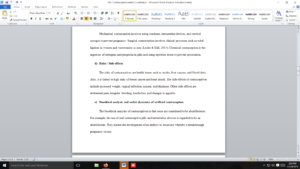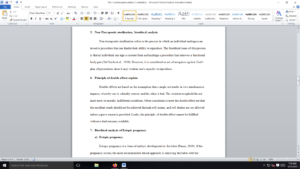Human sexual intercourse
After studying the course materials located on Module 3: Lecture Materials & Resources page, answer the following:
- Name and explain the levels of human sexual intercourse.
- Difference between reproduction and procreation.
- What are the two dimensions of intimacy?
- Contraception:
- What is it?
- What is the intention of contraception?
- Describe the three types of artificial contraception.
- Risks / Side effects
- Bioethical analysis and unfair dynamics of artificial contraception.
- Non-Therapeutic sterilization; bioethical analysis
- Principle of double effect; explain
- Bioethical analysis of:
- Ectopic pregnancy
- Cancerous reproductive system with pregnancy
- In Vitro Fertilization(IVF):
- Process
- Bioethical analysis of IVF
- Bioethical analysis of “to have a child”
- Read and summarize ERD paragraphs #: 40, 41, 42, 48, 52, 53.
Submission Instructions:
- The paper is to be clear and concise and students will lose points for improper grammar, punctuation, and misspelling.
- If references are used, please cite properly according to the current APA style
Requirements: 3 pages
(Note: The citations below are provided for your research convenience. You should always cross reference the current APA guide for correct styling of citations and references in your academic work.)
Read
- Ethical and Religious Directives (ERD) for Catholic Health Care Services (6th ed.). (2018).
Paragraphs: 40, 41, 42, 48, 52, 53 - PHI 3633 WK 3.pdf
Download PHI 3633 WK 3.pdf
Answer preview
Mechanical contraception involves using condoms, intrauterine devices, and cervical sponges to prevent pregnancy. Surgical contraception involves clinical processes such as tubal ligation in women and vasectomies in men (Lucke & Hall, 2014). Chemical contraception is the ingestion of estrogens and progestin in pills and using injection doses to prevent procreation.
- Risks / Side effects
The risks of contraceptives are health issues such as stroke, liver tumors, and blood clots. Also, it is linked to high risks of breast cancer and heart attack. The side effects of contraceptives include increased weight, vaginal infection, nausea, and dizziness. Other side effects are abdominal pain, irregular bleeding, headaches, and changes in appetite.
[1353 Words]

Human sexual intercourse


